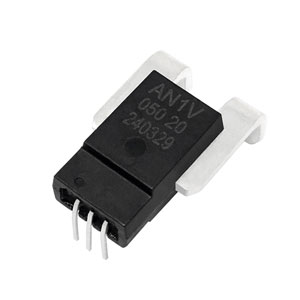
Distributed photovoltaic power generation system is a new type of power generation and energy comprehensive utilization method with broad development prospects. It mainly consists of photovoltaic arrays, combiner boxes, DC distribution cabinets, inverters, energy storage batteries, loads, etc.
Distributed photovoltaic power generation systems are of great significance in the field of energy. It can effectively increase the power generation of photovoltaic power plants of the same scale, while solving the problem of power loss in boosting and long-distance transportation. Secondly, distributed photovoltaic power generation systems have the characteristics of relatively low output power, low pollution, and outstanding environmental benefits. No noise during the power generation process, and it does not pollute the air and water. It can also alleviate the local electricity shortage to a certain extent, making an important contribution to the efficient utilization and sustainable development of clean energy.
When coordinating the operation of distributed photovoltaic power generation network load storage, it is necessary to fully sort out the information of each link in the system, clarify the characteristics and interactive coupling relationships of various equipment, and determine the output power of each device.
Currently, most solar power projects in China have installed monitoring devices that can achieve basic measurement and real-time monitoring. However, with the increasing application time and instances of photovoltaic systems, new demands have been put forward for real-time collection, online monitoring, and analysis technologies of photovoltaic power generation data.
For example, it is necessary to clarify the factors that affect the efficiency of photovoltaic power generation, and to judge and locate the degradation or failure of photovoltaic power generation systems. At the same time, the random and unstable characteristics of photovoltaic power generation also require the realization of human-computer interaction, real-time data collection and online monitoring, as well as data analysis of photovoltaic power generation.
Distributed photovoltaic power generation systems face many challenges during operation. Firstly, the temperature environment requires normal operation within the range of -30 ℃ to 50 ℃.
Complex and harsh environments such as exposure to sunlight, rain, hail, etc. place higher demands on the stability and reliability of the system. In terms of wireless communication, according to networking requirements, wireless communication technology must be used for data transmission and aggregation to achieve remote monitoring and management of distributed photovoltaic systems. In addition, distributed photovoltaic monitoring is a state monitoring that requires long-term standby operation, which requires the system to have low power consumption characteristics.

For example, CHIPSENSE AN1V PB22 is a high-precision miniature Hall current sensor developed based on ASIC technology. It performs excellent in various application scenarios, such as load detection, motor control, power management and overcurrent fault detection, inverter control, and DC-DC converter control, and is suitable for distributed photovoltaic power generation systems. The working temperature range of this sensor is -40 ℃~150 ℃; It has the characteristics of small size, high precision, and low power consumption, and can adapt to various harsh and complex environments. Matching communication modules can achieve wireless communication.
From the perspective of green transformation of energy structure, distributed photovoltaic power generation can effectively reduce dependence on traditional fossil fuels, lower carbon emissions, and contribute to achieving sustainable development goals. The application of CHIPSENSE AN1V PB22 current sensor in distributed photovoltaic power generation system can improve the stability and reliability of the system, ensure the efficient operation of photovoltaic power generation, and further promote the transformation of energy structure towards green and low-carbon direction.
CHIPSENSE is a national high-tech enterprise that focuses on the research and development, production, and application of high-end current and voltage sensors, as well as forward research on sensor chips and cutting-edge sensor technologies. CHIPSENSE is committed to providing customers with independently developed sensors, as well as diversified customized products and solutions.
“CHIPSENSE Sensing a better world!”
www.chipsense.net
4F, Building C, ZHENGLING.Hi-TECH PARK(Core Space) , No. 2 Cuizhu 2nd Street, Xiangzhou District, Zhuhai, Guangdong Province, China
+86-756-8600806